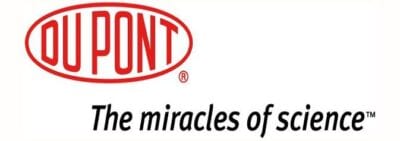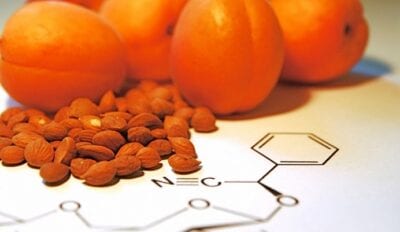DuPont is an American chemical company and produces chemicals, agrochemicals, polymers, safety materials, electronics and genetically modified seeds. DuPont has its facilities in over 70 different countries and after ExxonMobil and Dow, DuPont is the third largest producer of chemicals in the United States. DuPont was established in 1802, by Eleuthere Irenee Du Pont. Eleuthere Irenee DuPont was an oligarch who ran away from the French revolution and later he founded DuPont in US. DuPont was funded by the money Eleuthere Irenee DuPont brought from selling gunpowder machinery in France. In 1811, DuPont became the largest supplier of gunpowder for the US military.
From 1902 to 1912, DuPont expanded quickly into production of smokeless powder and dynamite. During WW1, 40% of explosives used by the world powers were supplied by DuPont. Along the way, DuPont purchased smaller chemical companies and in 1902, the government took DuPont to court and declared that DuPont was a monopoly by dominating the explosive business. Based on the court ruling DuPont had to create subsidiaries known as Atlas Powder Company and Hercules Powder Company.
In 1914, DuPont invested and got largely involved in automobile industry. From 1920 to 1935, DuPont discovered the first synthetic rubber, nylon, Teflon and polyester.
During WW2 (from 1941 to 1945), DuPont became the largest producer of war supplies. DuPont also played an important role in Manhattan Project and production of the first atomic bomb that was later dropped on Hiroshima and Nagasaki. During the same war, DuPont produced 4.5 billion pounds of explosives for US military use and DuPont made a huge profit off of other people’s misery (made a killing off of killing).
From 1950s to 1970s, DuPont came up with developing new raw materials like Dacron, Mylar, Lycra, Corfarm and Corian. In 1981, DuPont got into a bidding war with Seagram Company (who owned some shares in Conoco) to purchase Conoco, Inc. Conoco, Inc was a major American oil & gas producer and acquisition of Conoco made DuPont one of the top ten US producers of oil and gas. But in 1999, DuPont sold Conoco shares to Philips Petroleum Company.
In 1999, DuPont became the largest seed company and the producer of hybrid seeds used in production of genetically modified corn and soy. DuPont is among the top four biotech companies that produces 100% of genetically modified seeds and 60% of the world’s pesticides. The other three biotech companies are Monsanto, Syngenta and Bayer. These top biotech companies are also the largest producers of pesticides in the world. The farmers get subsidy from the government to produce GMO soybeans and corn.
DuPont is deeply rooted within the US government
Every year, DuPont pays millions of dollars to food lobbyists in order to buy politicians and members of congress. Last year DuPont spent about $4.8 million for lobbying. In fact, most of the food lobbyists who aggressively pursue the policies of DuPont & Monsanto have worked or are working for the government. In 2008 presidential campaign, Obama mentioned that the department of agriculture wasn’t the department of agribusiness and he promised to put people’s need ahead of politics. However after his election, he appointed officials in charge of USDA or FDA that defended, lobbied or worked for biotech companies like Monsanto and DuPont. Here are the lists of these individuals:
- Michael Taylor: Former VP in Monsanto who is now FDA deputy food commissioner
- Tom Vilsack: Former pro-biotechnology governor of Iowa that was assigned as USDA secretary.
- Roger Beachy: Former director of Monsanto who is now director of USDA
- Elena Kagan: Took Monsanto’s side against organic farmers in Roundup Ready Alfalfa case and is now nominated to Supreme Court
- Rajiv Shah: Former director of pro-biotech Gates Foundation who served as USDA secretary
- Linda Strachan: Monsanto’s and DuPont’s representative who is assistant secretary for U.S. Department of Agriculture and EPA
- Islam Siddiqui: Former DuPont and Monsanto VP who is now the representative of agriculture negotiator for US trade
- Ramona Romero: Corporate console to DuPont that now is nominated as General Counsel for USDA. In 2002 based on the Institute of Political Economy Research DuPont was marked the number one among 100 of contributors to air pollution in the US.
Over the last decade, DuPont has been involved in polluting the environment, air and drinking water. In 2002, the residents of Wood County in West Virginia were informed by the spokesman of West Virginia Department of Environmental Protection that their air was contaminated with DuPont’s plant that was producing toxic chemical called C8 (PFOA). In 2011, researchers found out that there is a correlation between high blood pressure in pregnant women and chemical C8. They also discovered that high blood pressure epidemic is usually combined with protein leakage into urine and that can cause pre-eclampsia which can threaten the health and life of both the mother and baby.
Mid-Ohio valley residents’ water was also contaminated with chemical C8 as a result of a nearby DuPont’s plant. Medical studies show that three out of four residents of Mid-Ohio Valley have signs of pregnancy induced hypertension and pre-eclampsia due to high exposure to C8. Teflon cookware and other nonstick products are made from chemical PFOA or C8. Although DuPont insist that exposures to C8 chemical known as PFOA doesn’t cause any health issues, studies show that exposure to C8 can cause immune system disorder, thyroid, liver problems and higher cholesterol in children.
In 2005, Glenn Evers (the former DuPont’s top scientist) revealed that in 1981 DuPont was aware of the health issues associated with using paper chemical coating in food packaging. This dangerous chemical (like chemical C8) accumulates in people’s body and over time could have adverse side effects.
In 2006, the United Steelworkers revealed a report that showed DuPont’s safety program called STOP is based on the idea that all injuries are caused by workers. However Mike Wright, the head of Health Safety and Environmental Department says that based on 20 years of investigation, the root of many catastrophic incidents in DuPont is related to unsafe workplace conditions. Based on Ken Test, the head of USW DuPont Council, many of DuPont workers and retirees suffer from chronic diseases due to expoure to dangerous and toxic substances and chemicals.
GMO War between DuPont and Monsanto
Although DuPont and Monsanto agreed to work with each other on sharing their biotechnology on production of genetically modified seeds and crops, Monsanto is now suing DuPont for violation of the license agreement between the two companies back in 2002.
At the same time, DuPont is suing Monsanto for its monopoly and restricted agriculture policies that engages no competitors. DuPont created its own genetically modified soy bean product called Optimum GAT that was meant to compete with Monsanto’s Roundup Ready GM soy product. However Optimum GAT failed to perform and DuPont added Monsanto’s Roundup into its own existing Optimum GAT. Now Monsanto is taking DuPont to the court for failing to establish a license agreement between the two companies. However if Monsanto’s patent is enforceable and deemed void, anyone could start using Roundup Ready which would be a huge victory for food freedom.
Source: http://www.seattleorganicrestaurants.com/vegan-whole-foods/dupont-history/
Chronological History of Events Involving DuPont

Study: Safety of Safety Evaluation of Pesticides (Dow Chemical Faked Safety Studies on Brain-Damaging Chlorpyrifos)

The Poison Papers: Watchdog Groups Release 20,000 Docs Exposing Decades of Collusion between Industry and Regulators over Hazardous Pesticides

Big Ag Companies Ordered to Stop Aerial Spraying Thanks to Ragtag Group of Oregon Locals

Study: The Hidden Power of the Big Three (BlackRock, Vanguard, and State Street)

Dupont Settles Toxic Chemical Water Contamination Lawsuit that Affected Six Water Districts

Cartoonist Fired for Criticizing Monsanto, Dupont

Adding Fluoride to the Water Supply was Proposed at a Meeting of the Western Pennsylvania Section of the American Water Works Association held in Johnstown, Pa.




